The Caesar Guerini Ellipse EVO – A New Mid-Range Italian Over/Under Punches Above Its Weight
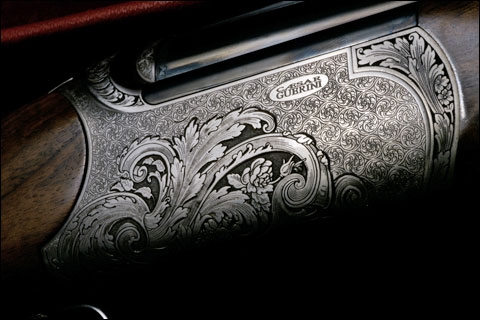
An assessment of a new shotgun can go one of two ways: Either we concentrate on the specifications, measurements, features, and options, or we can look at the characteristics that really matter in a shotgun. Those are fit, balance, handling, and reliability.
In the end, what really matters with a shotgun is how well you shoot it, and this depends largely on those factors. It is especially true with a game gun, which involves sudden situations, unexpected angles and combinations, instant reaction, and instinctive shooting.
The new Caesar Guerini Ellipse EVO is intended primarily as a game gun, and since it is offered in 20- and 28-gauge only, its game is quail, doves, and perhaps grouse and partridge. The EVO is content to leave ducks, geese, and far-flushing pheasants to its larger brethren.
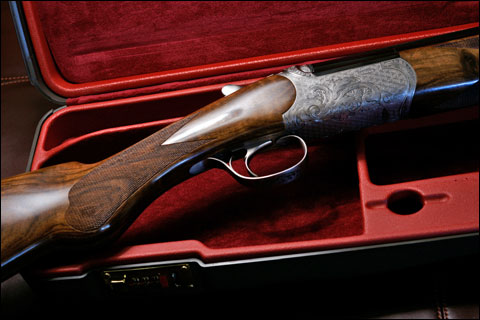
For this purpose, the EVO performs admirably. It comes from the shop with slight cast-off (buttstock bent to the right, for right-handed shooters) with cast-on available for left-handers on special order. This is an important part of proper fit, particularly when quick, instinctive shooting is required. Barrel lengths are 28- and 30-inch – good lengths for proper swing in smaller gauges – and it weighs from six pounds to a little over, depending on the specs. Caesar Guerini did not fall into the trap of making the gun too light.
The result of all this is a gun that feels properly proportioned, well balanced, and quick.
The EVO is the more expensive ($5,495 versus $3,995 for the Limited) of the two Ellipse models and as such boasts more elaborate engraving, a higher grade of walnut in the stock, and a few other aesthetic touches. Otherwise, the two are identical.
At this point, it is useful to look at some of the specific features of the Ellipse that set it apart.
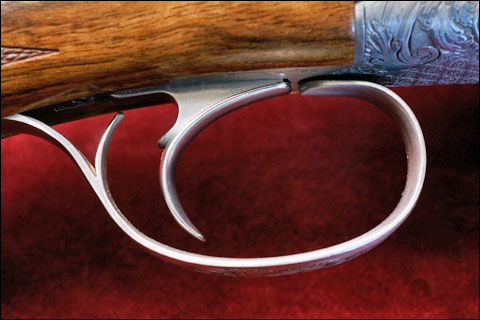
First, the trigger. It comes with an inertia-type non-selective single trigger, with selective optional. It fires the bottom barrel first and the recoil re-sets the trigger to fire the top barrel.
Second, the safety. Factory standard is non-automatic, with automatic optional.
Third, length of pull. The LOP is 14¾ inches, which is an excellent feature on a smaller-bore gun. It moves the balance slightly forward, compensating for the lighter barrels and improving swing.
Finally, choke tubes: There are five, ranging from Cylinder through ¼ (Improved Cylinder), ½ (Modified) ¾ (Improved Modified) and Full. For a small-game gun, the inclusion of the Cylinder tube is a great idea.
Those four features, combined with the gun’s overall dimensions, make an excellent gun for real hunting. For the majority of situations involving quail (especially pen-raised birds) or doves coming to a decoy, setting the Cylinder barrel to fire first, followed by ¼ choke, is ideal. It is also a good combination for ruffed grouse and woodcock.
Personally, on a hunting gun, I prefer an automatic safety for several reasons, but I can live without one. And I prefer not to have a selective trigger. Combining a selective trigger with interchangeable choke tubes leads to terminal confusion and second-guessing, distracting the shooter from the real business at hand, which is watching for birds and shooting well.
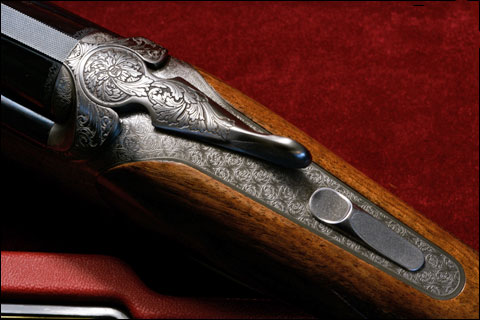
Adding an automatic safety to a non-selective trigger gives you, in my opinion, the best combination for a hunting gun.
For those who prefer it, the more conventional modern configuration (non-auto safety and selective trigger) is available, but I think Caesar Guerini should be congratulated for offering the simpler configuration that some see as anachronistic, but which I think is preferable in a game gun.
Actually, I would rather have a double trigger and an English (straight) stock, and Caesar Guerini offers those features through their custom shop at additional expense.
Since we are reviewing the EVO model particularly, and since decoration is what sets it apart from the Limited, we need to spend some time looking at what you get for your additional $1500.
The rounded receiver is a highly polished coin finish with a pleasing engraving pattern consisting of a flare of acanthus scroll on each side surrounded by interlacing rosettes. If I had to guess, I would say it is machine engraving of some type – certainly not hand-engraving – but it is done better than most.
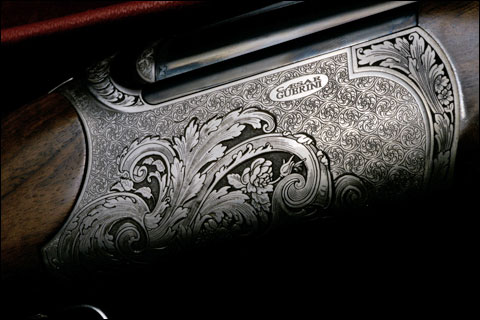
The wood in the stock is a couple of steps above plain, but I would not call it select by any means. The finish is supposed to be hand-rubbed oil, but it looks, feels, and reacts to dings like a coat of varnish.
The 26-line-per-inch checkering appears to be impressed rather than cut; either way, the diamonds are neither distinct nor sharp. But it fulfills the purpose of checkering and for the price you could hardly expect more.
The standard stock has a Prince of Wales grip – better than a full pistol grip for a game gun – and instead of a recoil pad it has a walnut buttplate. This feature is now common on Italian guns. I think they look awful, but it’s a matter of taste.
Overall, the Ellipse EVO has nice lines and little touches that make for a good hunting gun. The trigger shape, for example, is superb. More important, it does handle and shoot well. Opening and closing is smooth, and ejection is solid.
Since Caesar Guerini broke into the American market some years ago, it has established a reputation for delivering guns at all levels that give you more than you would expect for the price.
Like almost all Italian guns today, these are made on machines with a minimum of hand labor. If they weren’t, the prices would be vastly higher than they are.
So, taking that into consideration, how does it feel and function for a machine-made gun?
The answer is, very well indeed. The designers at Caesar Guerini have put a lot of thought and effort into making a real game gun at mass-produced prices.
Terry Wieland is Shooting Editor of Gray’s Sporting Journal, a columnist for Rifle, Handloader, and Safari Times, and author of several books on rifles, shotguns, and big-game hunting. Wieland’s latest best seller, Dangerous-Game Rifles, was published in 2006, and an expanded second edition was published in 2009. Terry’s web site is located at www.terrywieland.com.
Helpful resources:

Terry Wieland is Shooting Editor of Gray’s Sporting Journal, a columnist for Rifle, Handloader, and Safari Times, and author of several books on rifles, shotguns, and big-game hunting. Wieland’s latest best seller, Dangerous-Game Rifles, was published in 2006, and an expanded second edition was published in 2009.


Comments